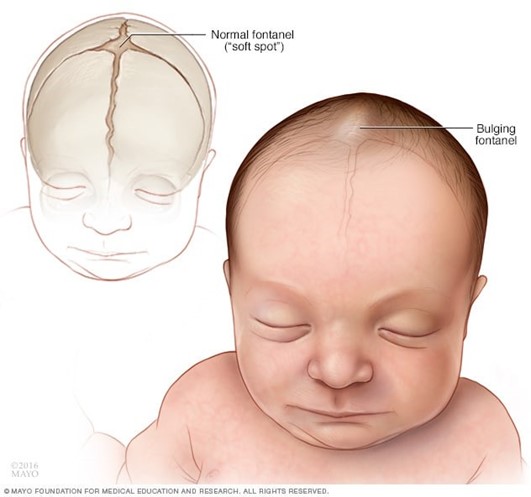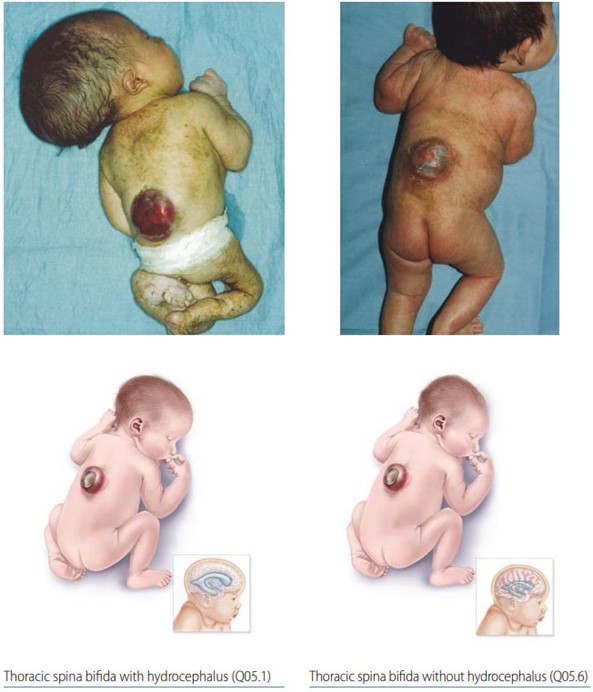A nurse is assessing an 11-month-old infant. Which of the following manifestations is associated with a CNS infection?
Oliguria.
Jaundice.
Bulging fontanel.
Negative Brudzinski sign.
The Correct Answer is C
A bulging fontanel is a manifestation associated with a CNS infection in an 11- month-old infant.
A bulging fontanel can be a sign of increased intracranial pressure, which can
occur with meningitis or encephalitis, both of which are types of CNS infections.
Choice A is incorrect because oliguria, or decreased urine output, is not typically associated with a CNS infection.
Choice B is incorrect because jaundice, or yellowing of the skin and eyes, is not typically associated with a CNS infection.
Choice D is incorrect because a negative Brudzinski sign would indicate that there is no neck stiffness, which would be an unlikely finding in a CNS infection.

Nursing Test Bank
Naxlex Comprehensive Predictor Exams
Related Questions
Correct Answer is C
Explanation
Neural tube defects are birth defects of the brain, spine, or spinal cord that happen in the first month of pregnancy.
Spina bifida is a neural tube defect that affects the spine.
Choice A, Hydrocephalus, is not a neural tube defect but rather a condition where there is an accumulation of cerebrospinal fluid within the brain.
Choice B, Cerebral palsy, is not a neural tube defect but rather a group of disorders that affect movement and muscle tone or posture.
Choice D, Muscular dystrophy, is not a neural tube defect but rather a group of genetic diseases that cause progressive weakness and loss of muscle mass.

Correct Answer is D
Explanation
The nurse should instruct the children’s parents to seal nonwashable items in airtight plastic bags for at least 72 hours to kill any lice or nits that may be on those items.
Choice A is incorrect because lice are specific to humans and do not infest dogs
or cats.
Choice B is incorrect because soaking combs and hairbrushes in alcohol is not necessary.
Instead, they can be soaked in hot water (at least 130°F) for 5-10 minutes.
Choice C is incorrect because spraying countertops and sinks with insecticide is not necessary and could be harmful.
Whether you are a student looking to ace your exams or a practicing nurse seeking to enhance your expertise , our nursing education contents will empower you with the confidence and competence to make a difference in the lives of patients and become a respected leader in the healthcare field.
Visit Naxlex, invest in your future and unlock endless possibilities with our unparalleled nursing education contents today
Report Wrong Answer on the Current Question
Do you disagree with the answer? If yes, what is your expected answer? Explain.
Kindly be descriptive with the issue you are facing.
